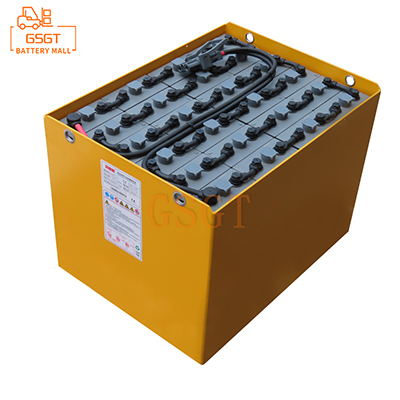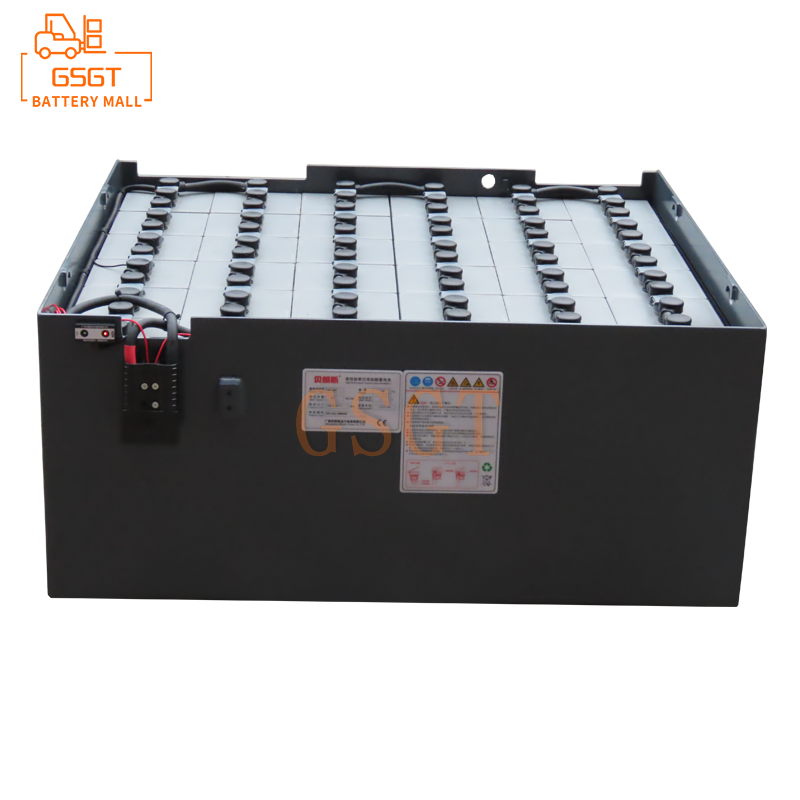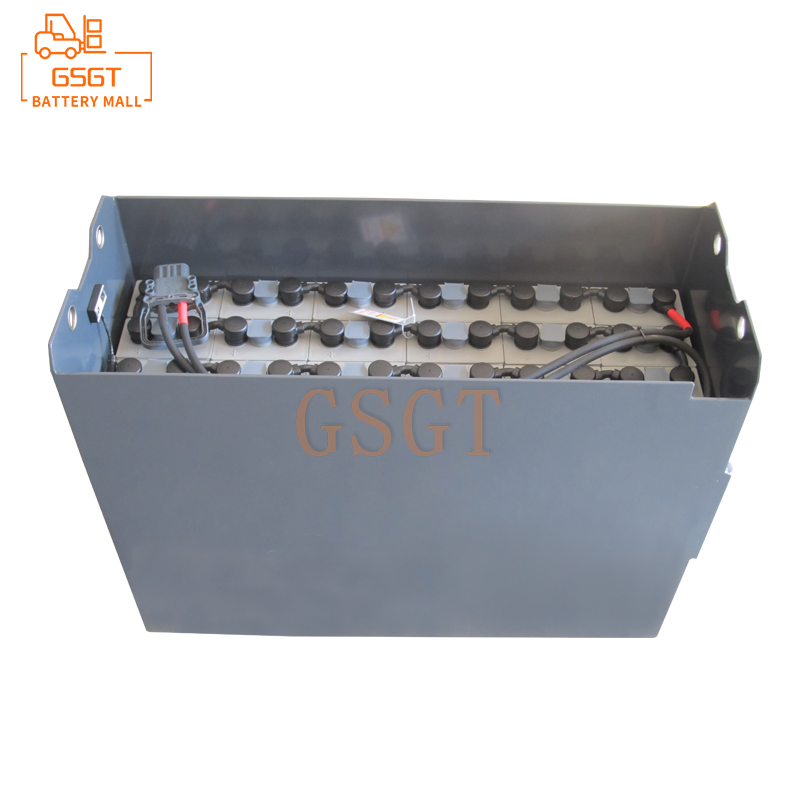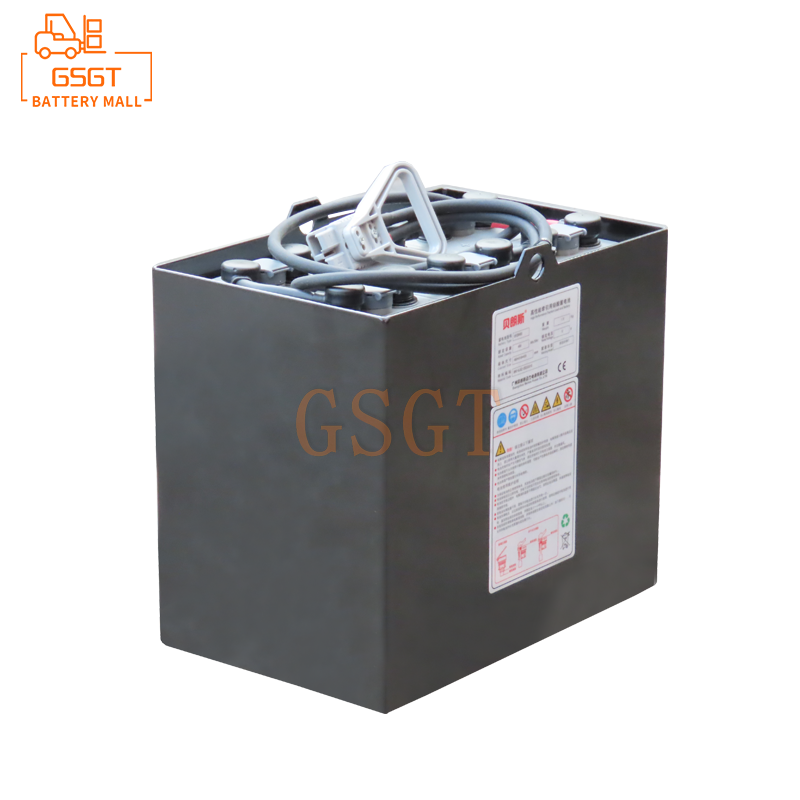Time:2025-04-01 09:49:16
Browse:649
In the operation system of forklift, lead-acid battery is the key power source, and its performance is directly related to the working efficiency and stability of forklift. With the high-frequency use of forklifts in various warehousing, logistics and industrial scenarios, lead-acid batteries will inevitably have various failures. In-depth understanding of these common faults and mastering effective maintenance tricks are of great significance to ensure the normal operation of forklift trucks and reduce operating costs.
1. Common failures and cause analysis
(1) Battery capacity decreases
1. ** Plate vulcanization ** : in a state of long-term deficit, lead sulfate in the electrolyte will crystallize on the plate, forming sulfides that are difficult to participate in electrochemical reactions, resulting in a reduction in active substances and a reduction in battery capacity. The operating environment of forklift trucks is complex, if the charging is not timely, frequent operation under low power, the risk of plate vulcanization will increase significantly.
2. ** Electrolyte dry ** : The battery will generate heat during the charging and discharging process, so that the water in the electrolyte will evaporate. If the water is not replenished in time, the electrolyte level drops, the plate cannot be fully soaked, the area involved in the reaction shrinks, and the battery capacity decreases. Especially for forklifts operating in high temperature environments, the electrolyte dries out faster.
3. **Plate aging**: After a long period of charge and discharge cycle, the active substances on the plate gradually fall off, and the structure is damaged, resulting in the weakening of the battery's ability to store and release electrical energy. In general, the normal cycle life of lead-acid batteries is about 300-500 times, more than this number, the plate aging phenomenon will become more obvious.
(2) Battery leakage
1. ** Shell rupture ** : The battery shell may be damaged due to collision or jolting when the forklift is moving heavy objects or driving. Once the shell is broken, the electrolyte will leak out, which will not only corrode the surrounding equipment, but also cause insufficient electrolyte inside the battery, affecting the battery performance.
2. ** Seal is not strict ** : the pole sealant of the battery, safety valve and other parts are poorly sealed, and when the battery is charged and discharged, the electrolyte will be brought out, forming a leakage phenomenon. Production process defects, aging seals, etc., may lead to a weak seal.
(3) Abnormal charging
1. ** Serious heat during charging ** : charging current is too large, charging time is too long, will aggravate the chemical reaction inside the battery, generate too much heat. In addition, the battery internal short circuit will also cause abnormal heating. Continuous high temperature will not only accelerate battery aging, but also may cause safety risks.
2. ** Can not be charged normally ** : charger failure, charging line break, battery internal break, etc., may cause the battery can not be charged normally. For example, the charger output voltage does not match the battery and cannot provide the appropriate charging energy for the battery.
(4) The battery self-discharge is serious
1. ** Electrolyte is not pure ** : If the electrolyte contains impurity metal ions, it will form a small short circuit inside the battery, causing self-discharge. The quality of the electrolyte in the production process is not strictly controlled, or impurities are mixed in the use process, which can lead to this problem.
2. ** Battery internal short circuit ** : plate deformation, partition damage and other reasons, will make positive and negative plate direct contact or indirect communication through conductive materials, resulting in battery self-discharge. The vibration during the operation of the forklift may gradually deform the plate and increase the risk of internal short circuit.
2. Maintenance tips
(1) Plate vulcanization repair
1. ** Using a small current for a long time charging method ** : the charger current is adjusted to about 0.05C (C is the battery capacity), and the battery is charged for a long time, which generally takes 24-48 hours. This method can make the vulcanized plate slowly reduce, recover part of the active substance. Closely monitor the battery temperature during charging to avoid overheating.
2. ** Chemical repair method ** : Add an appropriate amount of lead sulfate dissolving agent to the battery, such as EDTA (ethylenediamine tetraacetic acid), etc. These reagents can chemically react with lead sulfate to dissolve it, thus eliminating plate vulcanization. However, the operation should be strictly in accordance with the instructions for reagent use, and the addition amount should be controlled to avoid other damage to the battery.
(2) Deal with battery leakage
1. ** Shell rupture repair ** : For slightly cracked battery shells, special plastic repair adhesive can be used to repair. First clean the cracked area, rough with sandpaper, and then apply repair glue, let it cure and perform a sealing test. If the rupture is serious, replace the battery shell in time to ensure the safe use of the battery.
2. ** Sealing treatment ** : For the problem of tight sealing, it is necessary to check the pole sealant and the safety valve. If the sealant is aging, you can remove the old glue and re-apply a sealant that is resistant to high temperature and acid and alkali. For the safety valve, if it is found blocked or damaged, a new safety valve should be replaced in time to ensure the normal discharge of gas inside the battery and prevent electrolyte leakage.
(3) Solve the charging anomaly
1. ** Adjust charging parameters ** : Reasonably adjust the charging current and voltage of the charger according to the battery specifications. In general, the charging voltage of the lead-acid battery is 2.4-2.5V/monomer, and the charging current is 0.1C-0.2C. If it is found that the charging heat is serious, the charging current can be appropriately reduced to extend the charging time.
2. ** Check the internal disconnect between the charging line and the battery ** : Use a multimeter to check the resistance of each connection point of the charging line. If the resistance is too large, it indicates that the contact is poor. For the internal circuit break of the battery, it can be determined by measuring the voltage of the single battery. If the voltage of a battery is abnormally low or zero, there may be an internal disconnect. You need to remove the battery, check the plate connection, and repair or replace the disconnected component.
(4) Serious battery self-discharge should be dealt with
1. ** Replace the electrolyte ** : All the old electrolyte in the battery is extracted, and the inside of the battery is rinsed with distilled water 2-3 times, and then the new electrolyte that meets the standard is added. The new electrolyte shall be prepared with high purity sulfuric acid and deionized water in accordance with the specified ratio to ensure that its purity meets the requirements.
2. ** Repair internal short circuit ** : disassemble the battery, check the plate and partition. If the plate is deformed, it can be carefully corrected; If the partition board is damaged, replace it with a new one. When assembling the battery, ensure that the distance between the positive and negative plates is even to avoid short circuit again.
3. Preventive measures
(1) Standardize charging operation
1. According to the requirements of the battery instruction manual, choose the appropriate charger, and strictly control the charging time and charging current. Avoid overcharge and undercharge, and try to charge the battery when the remaining 20%-30%.
2. During the charging process, keep the charging environment well ventilated to avoid overheating of the battery. At the same time, check the charger and charging line regularly to ensure that it is working properly.
(2) Regular maintenance
1. Check the liquid level of the battery electrolyte every week, and add distilled water in time to keep the liquid level within the standard range. Monthly check whether the battery shell is cracked, leaking, and whether the pole is loose or corroded.
2. The battery is deeply discharged and charged once a quarter, that is, the battery power is put close to 0V, and then fully charged to activate the active substances on the battery plate and extend the battery life.
(3) Improve the use environment
1. Try to avoid the forklift working in high temperature and high humidity environment for a long time. If the fault cannot be avoided, take cooling and dehumidifying measures, such as installing a fan or dehumidifier, to improve the battery working environment.
2. Reduce the vibration during the driving of the forklift to avoid severe collision of the battery. Check the shock absorption system of the forklift regularly to ensure its good performance.
Lead-acid batteries as the core parts of forklift trucks, although there are many kinds of common faults, as long as the correct maintenance method is grasped, and daily preventive measures are taken, the battery life can be effectively extended, the efficient and stable operation of forklift trucks can be guaranteed, and the production and operation of enterprises can provide solid support.

$3405

$4045

$2040

$400

MESSAGE
Professional And Efficient
Security
Affordable Price
Professional Services